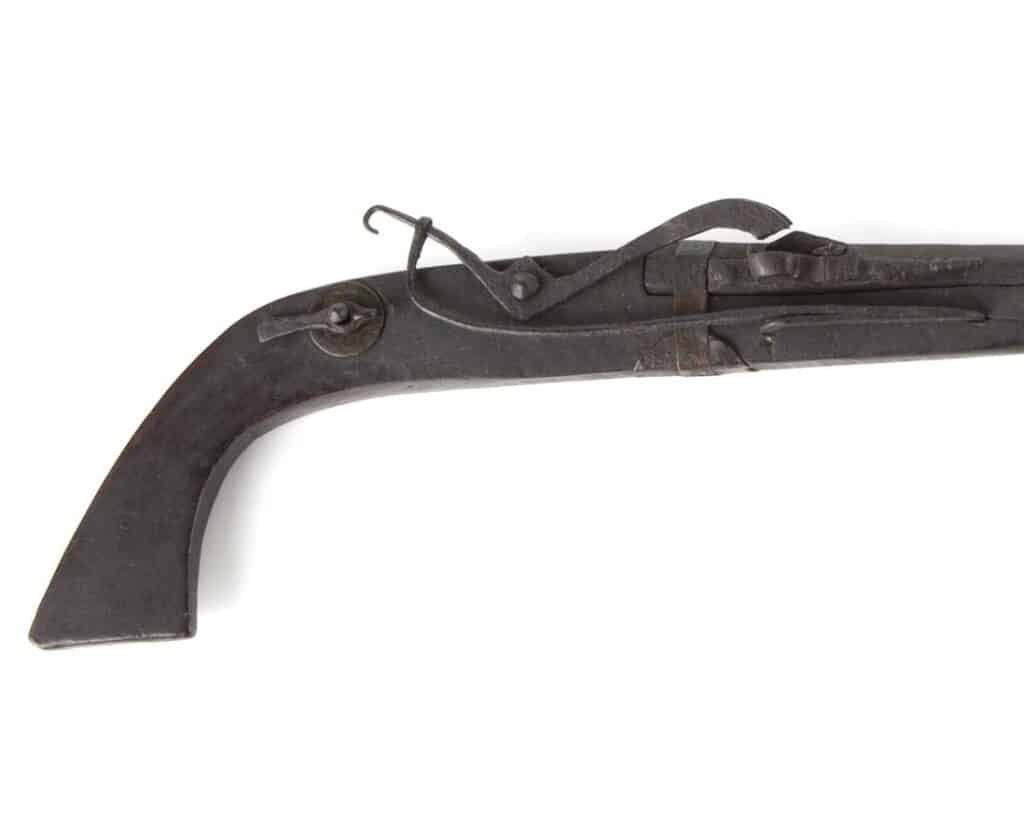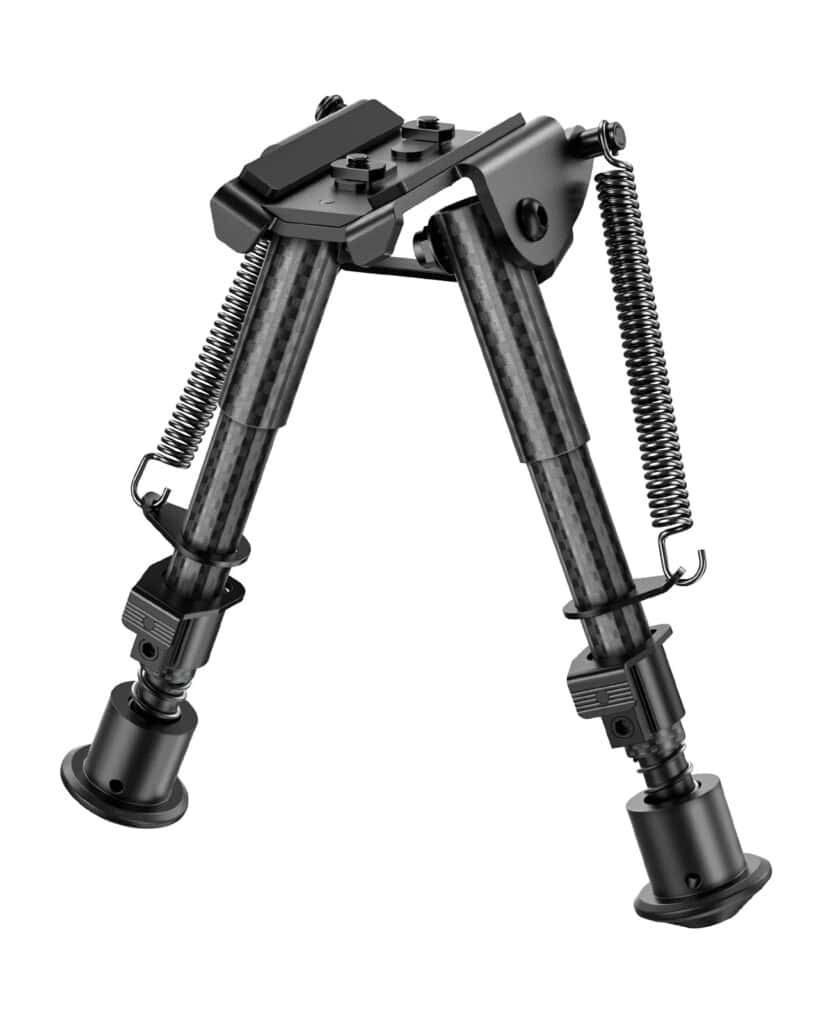
Introduction: The Birth of the Matchlock Arquebus
The matchlock arquebus was one of the earliest mechanically fired firearms, marking a significant leap forward in the evolution of gunpowder weaponry. First developed in Europe in the late 14th to early 15th century, the matchlock mechanism allowed soldiers to fire firearms with improved stability and accuracy compared to earlier hand cannons. The defining feature of the matchlock system was its use of a slow-burning match cord, or "match," which was mechanically lowered into a flash pan of priming powder upon pulling the trigger, igniting the main charge and firing the weapon.
The introduction of the matchlock arquebus revolutionized military engagements across Europe, the Ottoman Empire, and Asia. By the early 16th century, matchlock firearms such as the matchlock arquebus had spread across multiple continents, influencing battles in the Indian Ocean, the Middle East, and feudal Japan. This article explores the technological advancements, strategic uses, and pivotal battles where matchlock firearms played a decisive role in warfare.
Origins and Development of the Matchlock Mechanism
Early Firearm Development in Europe and Asia
The matchlock mechanism evolved from earlier firearm designs, such as the hand cannon and serpentine trigger mechanisms.
- The first known appearance of the matchlock occurred in Bohemia (modern-day Czech Republic) around the late 14th century, where it was an improvement over manually applied ignition sources.
- The German word Schloss (lock) is believed to be the origin of the term "matchlock," referring to the firearm’s ignition mechanism.
- By the early 15th century, matchlock arquebuses were appearing in increasing numbers across Western Europe, particularly in Spain, France, and the Holy Roman Empire.
Asian nations, particularly the Ottoman Empire and Japan, adapted matchlocks from European designs but improved them significantly:
- The Ottomans had already been using gunpowder weaponry since the 14th century, incorporating hand cannons and matchlock arquebuses into their elite Janissary corps.
- Japanese matchlocks (Tanegashima), introduced by Portuguese traders in 1543, became refined and were considered some of the best-crafted firearms of their time.
- The Ming Dynasty (China) produced their own versions of matchlocks, known as birding guns (niaoqiang), for use against Mongol incursions.
Matchlock Firearms in the Ottoman-Portuguese Conflicts
Firearms in the Indian Ocean Theater (1500–1515)
The early 16th century witnessed significant naval and land battles between the Portuguese Empire and the Ottoman-aligned forces in the Indian Ocean. These conflicts demonstrated the increasing importance of firearms in both European and Middle Eastern military strategies.
Portuguese Military Superiority: Artillery and Arquebuses
Portuguese forces were among the earliest European adopters of arquebuses, giving them a notable edge in naval engagements:
- Arquebuses used by Portuguese soldiers were typically .50 to .75 caliber smoothbore weapons, capable of piercing armor at short distances.
- Portuguese warships were heavily armed with bombards and breech-loading cannons, which provided overwhelming firepower in naval engagements.
- Infantry soldiers utilized matchlocks in conjunction with pikes and crossbows, creating a combined-arms approach to warfare.
The Ottoman and Mamluk Response
- The Ottoman Empire was already using matchlock arquebuses in their Janissary corps, but their naval forces relied more on archers and close-quarters combat.
- The Battle of Diu (1509) was a decisive victory for the Portuguese, primarily due to superior ship-mounted cannons rather than just matchlock firearms.
- Despite this, Ottoman and Mamluk forces adapted quickly, incorporating more firearms into their ranks over the following decades.

The Matchlock in Japan: The Battle of Nagashino (1575)
One of the most famous battles showcasing the strategic use of matchlocks was the Battle of Nagashino, fought in 1575 during Japan’s Sengoku period.
The Role of Matchlocks in Japanese Warfare
- Portuguese traders introduced matchlocks (Tanegashima) to Japan in 1543.
- The Japanese quickly mass-produced and improved these firearms, developing weather-resistant matchlocks with better durability than European counterparts.
- By 1575, daimyo Oda Nobunaga had accumulated over 3,000 matchlock gunners, making it one of the largest firearm deployments in pre-modern Japan.
Tactical Innovations at Nagashino
- Nobunaga arranged three ranks of matchlock gunners behind wooden palisades, ensuring continuous volleys of gunfire.
- This volley fire technique resembled early European musket formations but was uniquely adapted for Japan's terrain.
- Takeda Katsuyori’s cavalry charges failed to break through the sustained gunfire, leading to a devastating loss for the Takeda clan and marking the beginning of organized firearms use in Japan.
Decline of the Matchlock and Rise of Advanced Firearms
By the 17th century, the matchlock began to be replaced by more advanced ignition systems, including:
- The Wheellock (early 16th century) – A self-igniting mechanism that eliminated the need for a burning match.
- The Flintlock (17th century) – More reliable and weather-resistant, leading to widespread adoption in European armies.
- Percussion Cap Systems (19th century) – Eventually rendering all previous ignition methods obsolete.
The matchlock’s legacy, however, remained significant. It was the first firearm to make gunpowder weapons widely accessible, setting the stage for the future of infantry-based firearm warfare.
Conclusion: The Lasting Legacy of the Matchlock Arquebus
The matchlock arquebus played a critical role in shaping military history from the 15th to the 17th century. From European battlefields to Japanese feudal warfare and Indian Ocean naval conflicts, this firearm revolutionized tactics and battlefield engagements. While it was eventually superseded by flintlock and percussion cap weapons, the matchlock arquebus was the first firearm to make widespread infantry gunnery a reality, forever altering the nature of warfare.
Key References and Sources
- Geoffrey Parker, The Military Revolution: Military Innovation and the Rise of the West, 1500-1800. Cambridge University Press, 1996.
- David Nicolle, The Janissaries. Osprey Publishing, 1995.
- Stephen Turnbull, Samurai Warfare. Cassell & Co., 1996.
- Charles Oman, A History of the Art of War in the Sixteenth Century. Greenhill Books, 1991.
- J.F. Guilmartin, Gunpowder and Galleys: Changing Technology and Mediterranean Warfare at Sea in the Sixteenth Century. Cambridge University Press, 1974.
If you'd like to join the discussion on the matchlock rifle and other weapons, click here.
If you know of any forums or sites that should be referenced on this listing, please let us know here.



